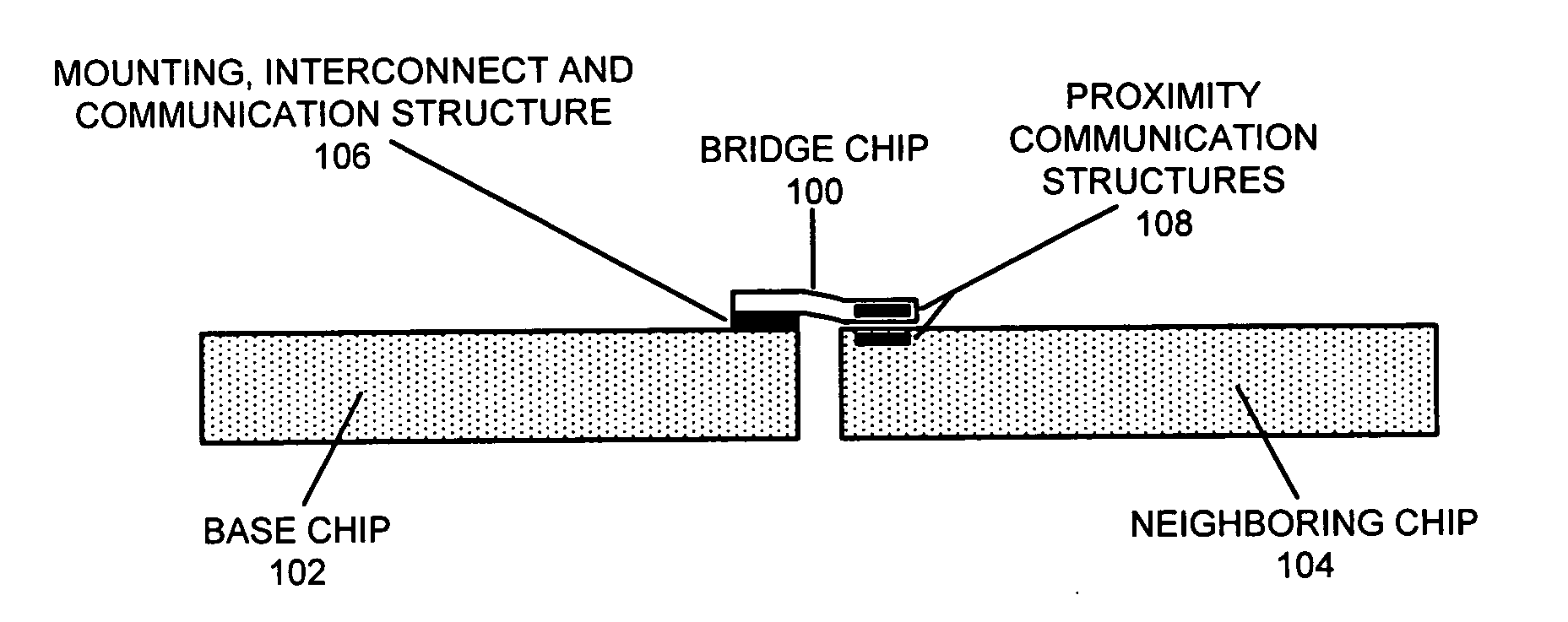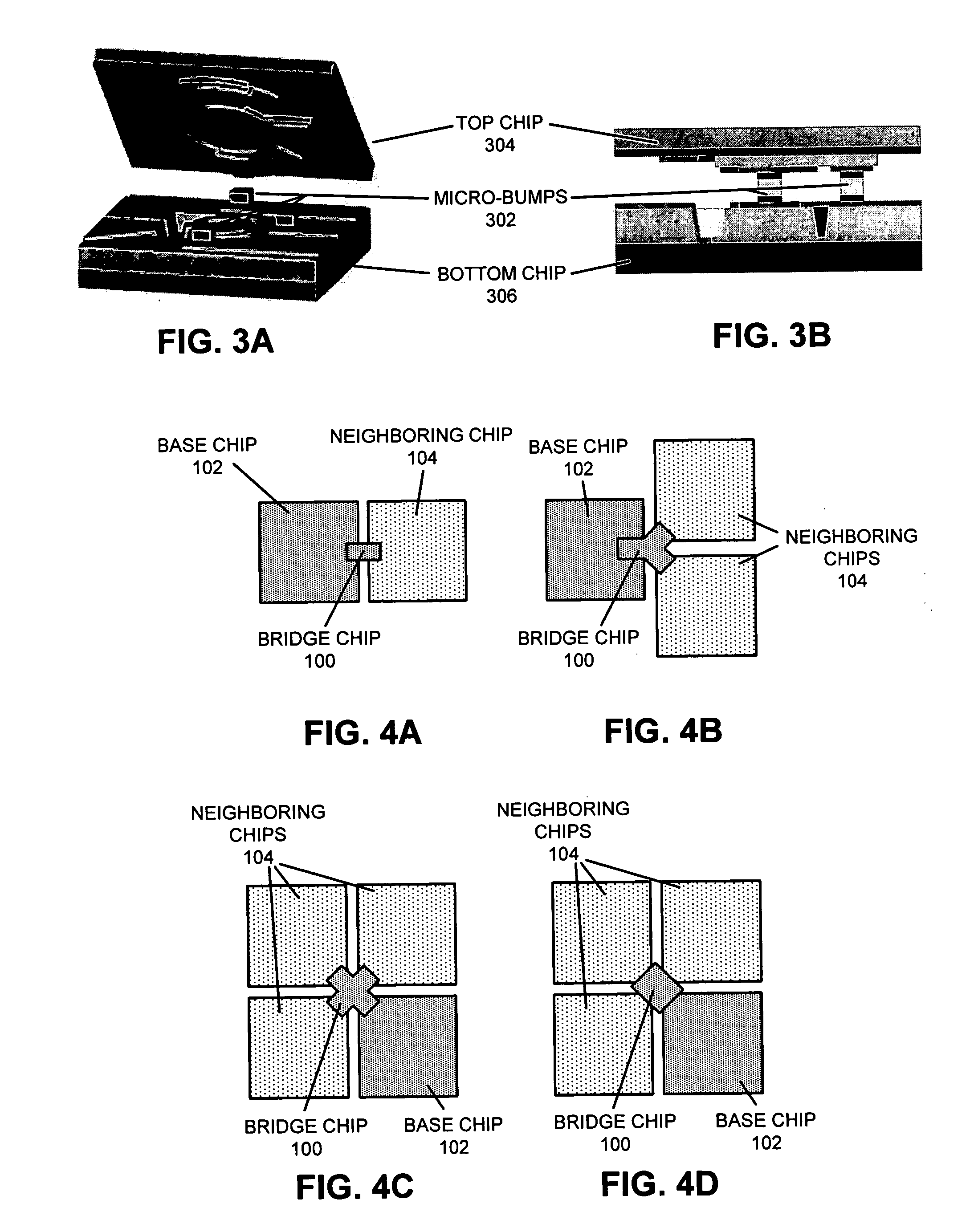Structures and methods for proximity communication using bridge chips
a technology of proximity communication and bridge chips, applied in the direction of semiconductor devices, semiconductor/solid-state device details, instruments, etc., can solve the problems of destroying received signals, not being able to align chips properly using existing mounting structures, and not being able to achieve the effect of properly aligning chips, simplifying system design, and reducing power consumption
- Summary
- Abstract
- Description
- Claims
- Application Information
AI Technical Summary
Benefits of technology
Problems solved by technology
Method used
Image
Examples
Embodiment Construction
[0054] The following description is presented to enable any person skilled in the art to make and use the invention, and is provided in the context of a particular application and its requirements. Various modifications to the disclosed embodiments will be readily apparent to those skilled in the art, and the general principles defined herein may be applied to other embodiments and applications without departing from the spirit and scope of the present invention. Thus, the present invention is not limited to the embodiments shown, but is to be accorded the widest scope consistent with the principles and features disclosed herein.
Challenges of Proximity Communication
[0055]“Proximity communication” makes possible direct chip-to-chip communication through capacitive coupling between mating arrays of pads on two closely-adjacent chips. Proximity communication enables extremely large bandwidth and bandwidth per area of an array, and enables large sets of densely-packed integrated circ...
PUM
 Login to View More
Login to View More Abstract
Description
Claims
Application Information
 Login to View More
Login to View More - R&D
- Intellectual Property
- Life Sciences
- Materials
- Tech Scout
- Unparalleled Data Quality
- Higher Quality Content
- 60% Fewer Hallucinations
Browse by: Latest US Patents, China's latest patents, Technical Efficacy Thesaurus, Application Domain, Technology Topic, Popular Technical Reports.
© 2025 PatSnap. All rights reserved.Legal|Privacy policy|Modern Slavery Act Transparency Statement|Sitemap|About US| Contact US: help@patsnap.com



